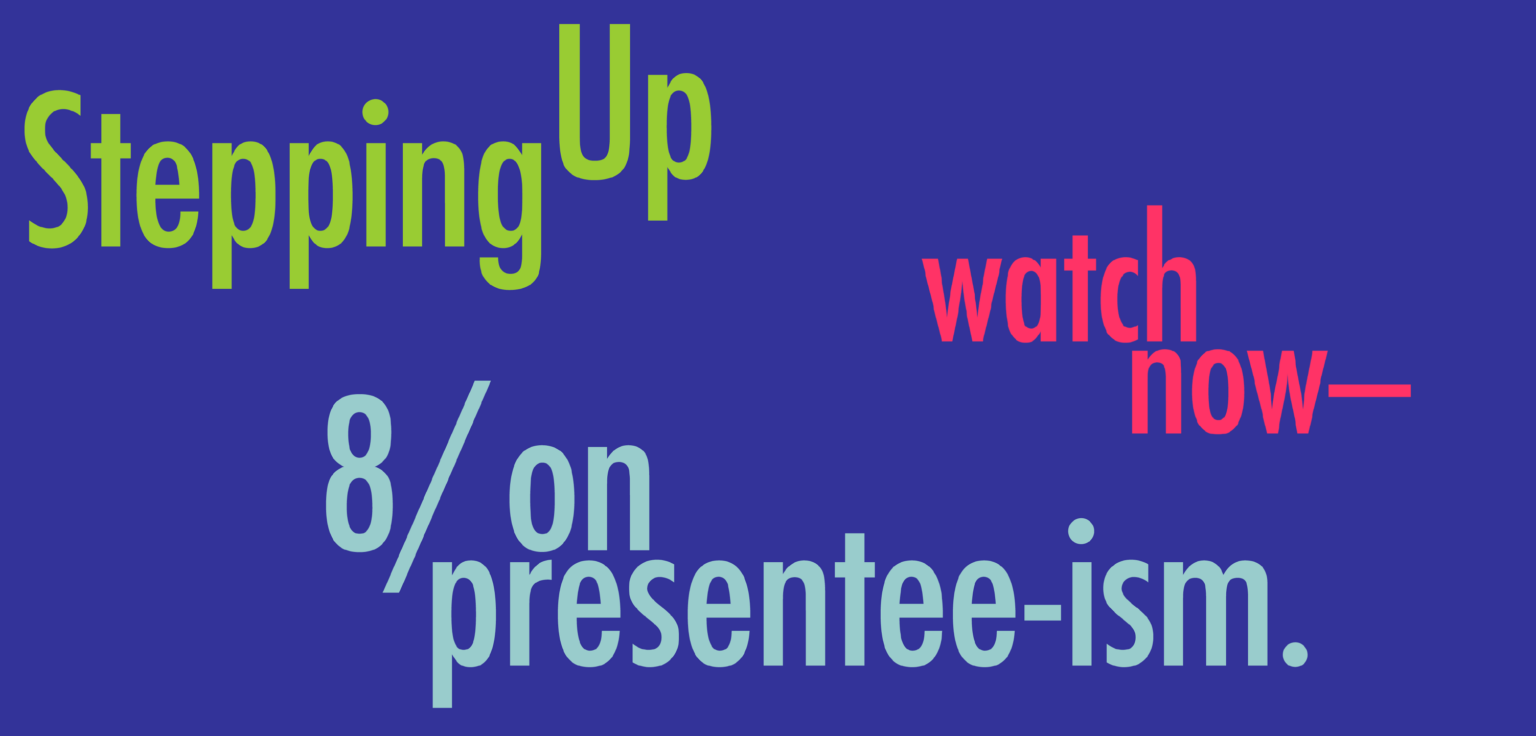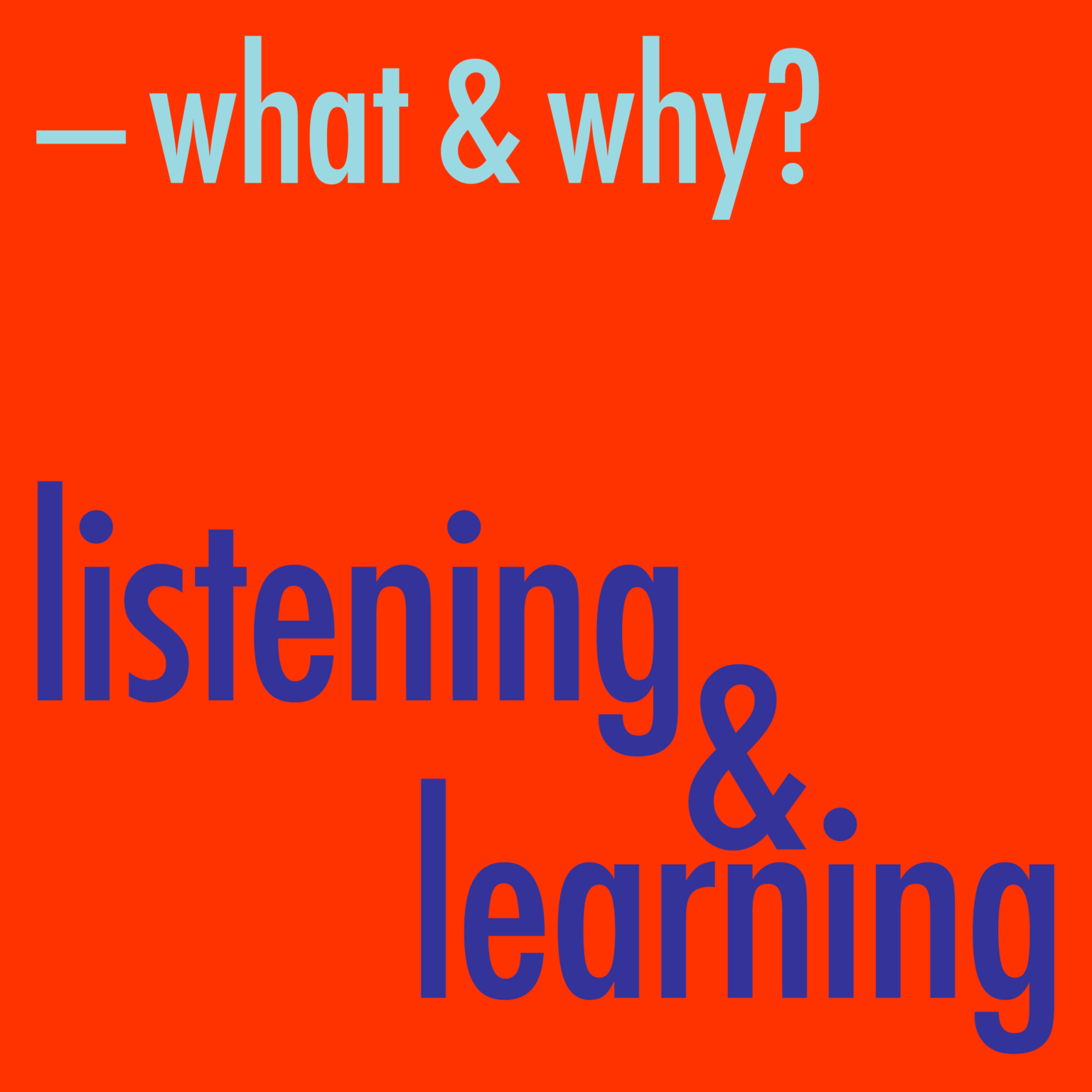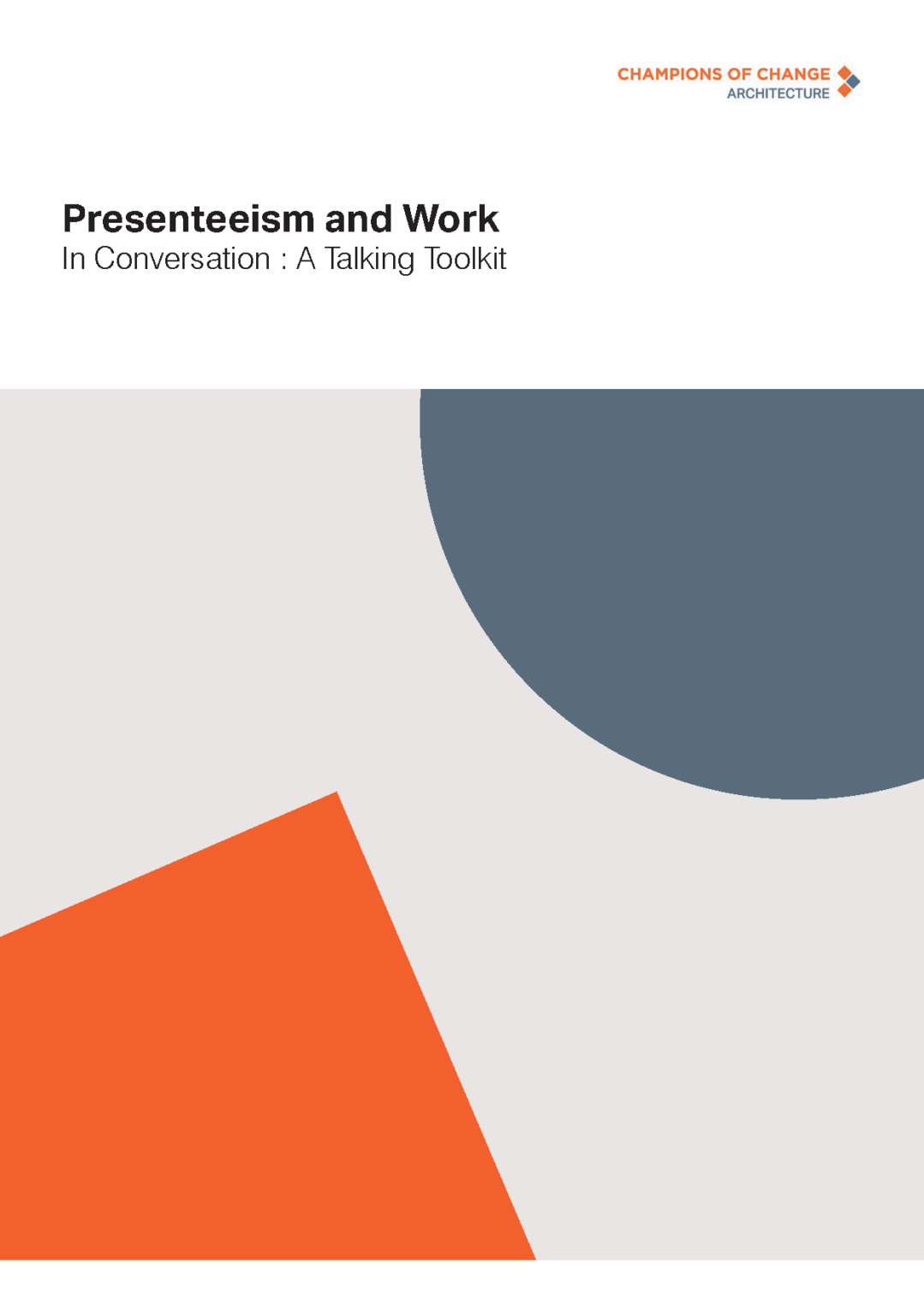What is presenteeism? How does it impact gender equity? What can be done to reduce it? The Champions of Change Architecture Group argues that considered, structured conversations are an effective way to address presenteeism within practices and offers a guide to get started – Presenteeism and Work: A Talking Toolkit.
Lynne Hancock defines presenteeism and talks about the development of the toolkit at Stepping Up .
A conversation starter
Presenteeism and Work: A Talking Toolkit provides a comprehensive guide to understanding the issue and facilitating safe and effective conversations on nine connected topics. Developed by the Champions of Change Architecture Group, it is relevant to architectural practices of all sizes.
The toolkit seeks to increase understanding of presenteeism and its impacts on architectural practice. The topic is positioned in relation to long-hours cultures, with presenteeism defined as “employees coming to work but not being fully engaged or productive because of the pressure to always be available and visible, rather than focusing on achieving good results”.
Presenteeism and Work is designed to start conversations within practices about these challenges. It enables leaders, managers, human resource professionals and employees to have structured discussions in a format that encourages all participants to suggest practical solutions and identify actions that can be taken. This approach is consistent with the Champions of Change ‘listening and learning’ method.
What is in the toolkit?
The talking toolkit explains what drives presenteeism and identifies the impacts. It offers detailed guidance on how to set up useful workshops and group conversations in practice. It outlines how to introduce the topic of within a practice, who is involved and when to hold these discussions. It provides a schedule, tips on how to maintain confidentiality and an outline of how to take further steps. It also covers the big questions – Who does this impact and benefit? What does the future of the practice look like?
The toolkit offers nine conversations, with an outline of why each matters and a series of questions to start the discussion.
- Work demands and work life balance
- Trust autonomy and support
- Feeling connected
- Organisation culture, leadership and work ethic
- Role clarity
- Hybrid working
- Be organised
- Meetings
- Visibility
It includes a Facilitator Guide and Template with tips and suggested agendas, timelines for discussions, action planning and wrap-up.
Lynne Hancock outlines the nine conversation topics.
Further watching / reading

Watch the invigorating conversation about challenging presenteeism and long hours, with John Prentice, Lynne Hancock and Lee Hillam.

Monica Edwards summarises the process, objectives and outcomes of the Listening and Learning sessions, developed by the Champions of Change Coalition.

Listening and Learning is at the core of the Champions of Change approach. Monica Edwards outlines the four-step process, describing it in relation to design processes.
Presenteeism and Work: A Talking Toolkit was developed by the Champions of Change Architecture Group, led by John Prentice and Virginia O’Farrell (Woods Bagot), Hayley Sainsbury (BVN), Lynne Hancock (DesignInc) and John Rowley, Kayle Butterworth and Bianca Caprara (SJB).
The talking toolkit approach is modelled on the Talking Toolkit: Preventing work-related stress, published by The Health and Safety Executive, UK, November 2021.





















